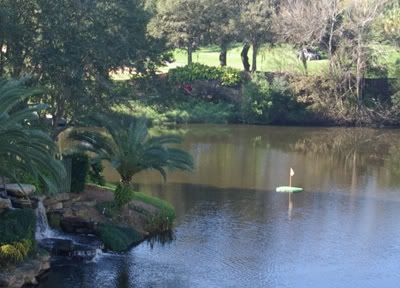The truth was confirmed by a trip to Hot Stix Golf Performance Center at the Doral Arrowwood in Rye Brook, NY. I took my irons in for a check-up and was shocked by what Steve Grosz and Chris Marsh found when they put the clubs to the test. Then I was delighted by what they did to fix them. My irons, by the way, are Ping i-3’s that were fitted to me four years ago and seemed to work just fine at the time. But that was then and this is now and, despite a better swing thanks to many lessons and much practice, my approach shots seemed to be getting more and more erratic.
 It turns out that at least part of the problem is the clubs. Grosz explained that, once the basic lie angle is determined by your body and your swing (which is what used to happen during a normal fitting), each one of a matched set of irons should have progressively shorter shafts (by a half-inch each) and a one-half degree more upright lie angle. When they measured my irons, some of them were as much as three times more upright than they should be.
It turns out that at least part of the problem is the clubs. Grosz explained that, once the basic lie angle is determined by your body and your swing (which is what used to happen during a normal fitting), each one of a matched set of irons should have progressively shorter shafts (by a half-inch each) and a one-half degree more upright lie angle. When they measured my irons, some of them were as much as three times more upright than they should be.Does it matter? Only if you want to hit greens in regulation. Each degree an eight iron is off, for example, sends a 150-yard shot 15 feet off-line unless your swing somehow compensates for it. As you can imagine, it’s almost impossible to consciously or sub-consciously adjust every swing if the clubs aren’t right. So what’s the big deal about 15 feet? If the hole is cut five paces from the edge of the green (which would be a generous position), your approach is going to land somewhere other than the putting surface.
Grosz and Marsh measured all my irons and reset the lie angles. Now the same swing should produce the same line with each club—assuming I swing the same way twice. Considering that my pitching wedge was a whopping 1.5 degrees off, I expect to be looking at a lot more birdie putts instead of hoping for a sand save.
This is just one facet of the complete testing and fitting service Hot Stix provides. They also measure the ideal loft and shaft frequency for your irons (and woods) and determine the proper weight and bounce for each of your wedges. If you want, they’ll also apply their technological skill to your putting stroke, measuring impact, launch angle, skid, follow-through, and consistency. Services are available individually (an iron fitting lasts about 90 minutes and costs about $200), or you can go the whole route and get a “Tour fitting” that includes a session on the course where the experts will observe your swing under varying conditions. That lasts four to six hours.
The biggest single advantage Hot Stix offers, in my opinion, is that all testing is done outdoors on a full range, so the GPS and vector analysis is complimented by seeing the actual ball flight. I think I swing differently outdoors than I do in a testing booth, too.
Dave Donelson, author of Heart of Diamonds a romantic thriller about blood diamonds in the Congo


